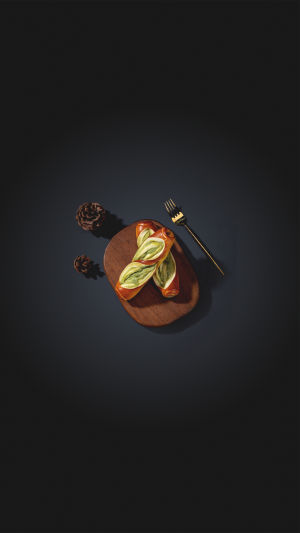Welcome, Lykkers! Why the baguette remains a national favorite?
France is renowned for its culinary legacy, and among its many delights, one creation stands tall: the baguette. Known for its crisp golden crust and soft interior, this long, slender bread has become a symbol of French life.
More than just a daily staple, the baguette is recognized globally as a cultural treasure and was officially listed as an Intangible Cultural Heritage by UNESCO in 2022. Let’s explore the fascinating journey of this beloved bread.
<h3>From Elegant Origins to Everyday Delight</h3>
<b>The journey begins in Vienna</b>
Although now a French favorite, the origins of the baguette can be traced back to 19th-century Vienna. A significant baking innovation—steam ovens—was introduced during this time, allowing bakers to create bread with a crispy exterior and airy interior.
This breakthrough helped shape the bread that would later evolve into the baguette.
Initially, this type of bread was more common among wealthy households due to its higher cost, influenced by heavy bread taxes. Once those financial barriers were removed, it became more accessible to the general population. Its long, oval form and the slashes on the surface gave it a distinctive appearance even then.
<b>The rise of the Parisian favorite</b>
The bread’s popularity in France took off when a baker from Austria introduced it in a Parisian bakery. Its versatility—suitable for breakfast, lunch, or snacks—made it particularly appealing.
Between the 1920s and 1930s, a new regulation restricted early-morning baking, requiring bakers to start after 4 a.m. As a result, a thinner, elongated dough was adopted to speed up preparation and baking. This shift solidified the bread’s recognizable shape and its new name—baguette, meaning "stick."
<h3>The Legal Framework Supporting the Baguette</h3>
<b>Establishing the 'baguette de tradition'</b>
A turning point came in 1993 with the introduction of the Raffarin Law, which officially defined the term baguette de tradition française. While the guidelines are flexible rather than strict, they created a framework to protect traditional baking methods and ingredients.
The law strengthened the association between the bread and the national identity of France.
<b>Paris celebrates its finest bakers</b>
To further respect this culinary icon, the Grand Prix de la Baguette de Tradition Française de la Ville de Paris was launched in 1994. In this annual event, a panel selects the best baguette among participating Parisian bakeries. The winner earns the distinguished role of being the exclusive bread supplier to the Élysée Palace for the following year.
<h3>A Global Recognition</h3>
In November 2022, the baguette's cultural importance was acknowledged globally when UNESCO added it to the list of Intangible Cultural Heritage elements.
The listing emphasized not just the bread itself but the knowledge, craftsmanship, and social significance surrounding it. The announcement was met with enthusiasm, and initiatives were planned to show respect to the artisan bakers and their contributions, including a national celebration day in support of traditional baking.
<h3>What Makes a True 'Baguette de Tradition Française'?</h3>
<b>Strict simplicity and artisanal care</b>
According to the Raffarin Law, an authentic baguette must weigh between 250 and 300 grams and be 55 to 70 centimeters long. The permitted ingredients are only four: wheat flour, water, leavening, and salt. The allowed salt ratio is 18 grams per kilogram of flour.
Only minimal exceptions are accepted:
- Up to 2% of seed flour
- A maximum of 0.5% soy flour
- Up to 0.3% malted wheat flour
No additives, enhancers, or freezing of dough are permitted.
<b>Traditional preparation techniques</b>
The process begins with careful weighing and mixing, followed by the first fermentation. The dough is then divided, gently shaped, and allowed to rest again. Before baking, slashes are made on the surface, serving as the baker’s signature. These steps must all occur in the bakery itself, distinguishing artisanal craftsmanship from mass production.
<h3>The Challenge of Preserving Freshness</h3>
Unlike some longer-lasting breads, the baguette is best enjoyed the same day it’s baked. Its crisp crust and tender interior begin to fade after just a few hours. With approximately 35,000 bakeries across France today—down from around 55,000 fifty years ago—this decline reflects changing consumer habits and the rise of industrial competitors.
Yet, growing interest in quality over quantity is inspiring a new generation of skilled bakers. Many consumers now prefer purchasing smaller amounts of high-quality bread from local bakeries, supporting time-honored methods.
<h3>Conclusion: A Culinary Emblem with Enduring Charm</h3>
The baguette is far more than just bread. It embodies tradition, craftsmanship, and everyday life in France. From its foreign beginnings to its current recognition on the global stage, it has traveled a remarkable path. Today, it continues to connect communities through taste, skill, and a shared appreciation for good food made with care.





